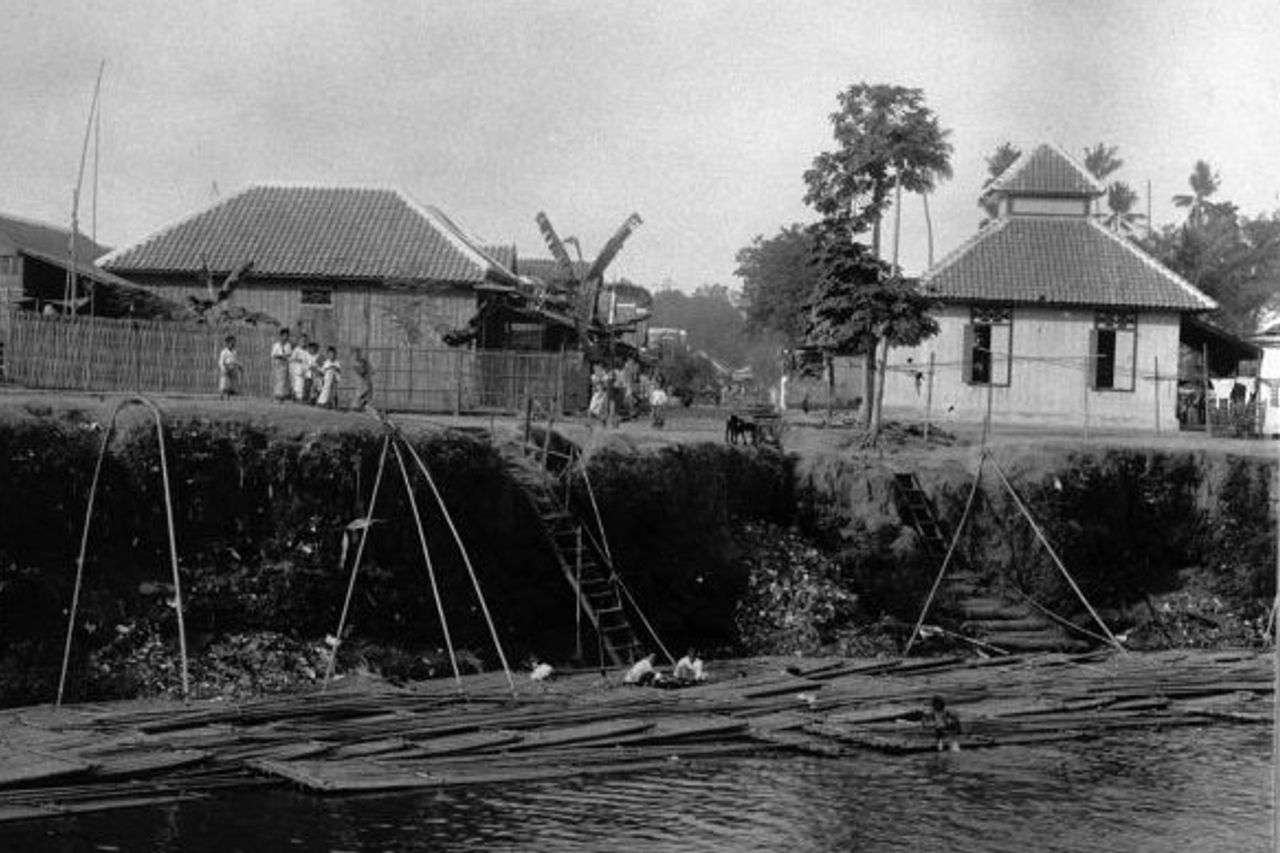The History of Kwitang Village: The Living Place of Celebrities and the Witness of Nyai Dasima's Forbidden Love Story

JAKARTA - Behind the hustle and bustle of Jakarta, the capital city has received praise from former number one in Indonesia, Soekarno. Bung Karno called Jakarta a beacon of the nation's struggle. In Jakarta, diversity comes together. Kwitang is one of those varieties. It is the origin of Kampung Kwitang and the various histories in it.
Australian researcher, Lance Castle, once revealed the same thing. For Castle, Jakarta is a mosaic, a melting pot of various identities that grow into one. In Castles' view, Jakarta has an attraction that can absorb various ethnic groups and backgrounds to live in it. The manifestation can be seen from the presence of villages in Jakarta, which are inhabited by multi-ethnic groups.
Kampung Kwitang is a miniature of diversity in the capital. Kwitang is the name of a village in Central Jakarta. Apart from Betawi native people, Kwitang is also inhabited by Chinese, Arabs, and Europeans. This village is legendary. Moreover, Kwitang existed long before Indonesia proclaimed independence.

It is proven by the registration of Kwitang as the 13th wijk (village) of 25 wijk, under Afdeling Batavia, District Weltevreden, Onderdistrict Senen. Interestingly, the origin of the name Kwitang was a mystery because it had many versions. Quoted by G.J Nawi, in an article entitled Kwitang Dari Kata Gnuidang (2019), there are at least two versions related to the origin of the name Kwitang Village based on history and several oral speeches.
"The first version stated that Kwitang came from Kwik Tang Kiam, the name of a Chinese landlord. Kwik Tang Kiam controlled almost the entire area of Kwitang village at that time until the Betawi people called it Si Kwik Tang village, which eventually, over time, the village became Kampung Kwitang," as written in the book.
In the second version, the name Kwitang comes from the name of a healer who was also a kuntao warrior - a martial arts genre, Kwe Tang Kiam. The community called it Kwe Tang Village so that gradually it became Kwitang. Unfortunately, both versions are just baseless myths.
G.J Nawi then listed the opinion of a Chinese cultural observer, David Kwa, to emphasize that both versions were absurd. He explained that the Chinese in Eastern Java generally used the Kwik clan. Meanwhile, for Western Java, they usually used the Kwe clan.
"The name Kwitang came from the Hokkien community from South China, who used to be the majority population in the village. Once again, quoted from David Kwa, the name Kwitang comes from the phrase Gnuidang (Kwitang). It is the name of Guangdong Province (Kwangtung) in the Ciangciu accent Hokkian pronunciation. Whereas in the Hokkien pronunciation, the Amoi or Emui accent is Gngdang," he added.
Inhabited by Celebrities
Along with its development, the multi-ethnic Kwitang village was inhabited by many celebrities from time to time. Some of them work as politicians, artists, and humanists, and are good at silat.
"Mr. Mohamad Roem, a Masyumi figure, when the physical revolution broke out against the Dutch, he was shot in his right hand during the guerrillas in Kwitang. The former minister of religion, Tarmizi Taher, became my football partner while living in Kwitang. Here also lived the famous author Trisno Juwono who was also a free parachutist," said Alwi Shahab, in the book Maria Van Engels: Men-in-law Habib Kwitang (2004).
Alwi added, other figures were growing up and living in Kwitang. They were former Deputy Governor of DKI Jakarta, Eddy M Nalapraya; film director, Arifin C Noer; former Indonesian Ambassador to Australia, Sabam Siagian; as well as the Head of Sinematek, SM Ardan. The former home of the legendary artist, Ismail Marzuki, who composed more than 200 songs, is still in Kwitang.
The Beginning of Nyai Dasima's Story
Kwitang is also known as the origin of the famous legendary Nyai Dasima story. Around the Ciliwung River - now near the Mount Agung Bookstore and Maritime Headquarters - in the 1820s, Nyai Dasima was killed by Bang Puase, a champion in Kwitang.
In the past, Nyai Dasima was known as the young wife of a high-ranking VOC official who later married Samiun, a sado craftsman from Kwitang. Samiun was often seen with his sado in front of the Kwitang Urban Village Office. Unfortunately, Nyai Dasima, who was famous for her beauty, was killed by Bang Puase at the behest of Hayati, the jealous wife of Samiun.
The story of Nyai Dasima was then adopted into a book by G. Francis with the title Tjerita Njai Dasima (1896). The story is legendary, not only in the Dutch East Indies. The fame of the Nyai Dasima story spread to the Malay Peninsula and Singapore.
However, over time, the story written by G. Francis was reconstructed in such a way to makethe Betawi people looked bad. In 1963, the Betawi figure, SM Ardan, re-edited Nyai Dasima's story. SM Ardan revived the story of Nyai Dasima with more relevant conditions to the Betawi people at that time.
The re-writing of Nyai Dasima's story by Ardan received a positive response and was later reprinted many times. Ardan's story was so different. He made Nyai Dasima's story more alive. Compared to G. Francis's version, which wrote Nyai Dasima's story like a report.
Ardan opened the story of Nyai Dasima elegantly through a fragment of the sentence: "Jakarta in Betawi era. 1820s. At that time, Kwitang Village was still half forest. There were not many inhabitants."
Meanwhile, G. Francis started the story with a fragment of the sentence: "Once upon a time, around 1813, there was a ruler in Tana Tjoeroek, one Englishman, Edward W. He had one 'nyai'. The name of the Islam woman in Koeripan Village is Dasima.
